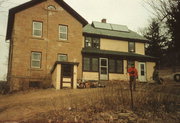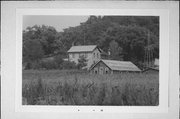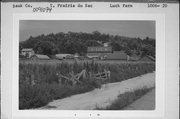| Additional Information: | In the 1840s and 1850s, a group of twenty-two German-speaking Swiss immigrants from Canton Graubünden developed this rural community along the branches of Honey Creek, where they found a pastoral landscape of rolling farmland, wooded hills, and wetlands. Today, the historic district encompasses approximately twelve square miles and includes forty-six farmsteads.
The houses, barns, granaries, churches, and cemeteries evolved over three generations. A handful of the extant buildings date from the first generation: log homes subsequently covered with clapboard. Their children constructed their homes of dolomite, the local limestone with a warm yellow color. Six gabled-ell houses, built of dolomite between 1857 and 1884, display the skills of a John Peter Felix and Peter Kindschi, who had emigrated from Switzerland, and Caspar Steuber, who hailed from the Waldeck region, now central Germany. All three excelled in an unusual technique known as block-and-stack construction.
But it is the block-and-stack buildings that give Honey Creek its distinctive character. One of the earliest extant examples is that erected by Peter Kindschi for himself. He built a block-and-stack upright in 1870, joining it to an older one-story rubble wing to create a gabled-ell configuration. The exact date of the older wing is unknown, but the wing was altered in 1934 by the addition of a frame second story and a porch enclosure. Kindschi’s masonry skills are still evident in the upright section.
Behind the Kindschi house are two barns and two granaries. All four of these buildings are timber-framed, reflecting another trend in the Honey Creek area. Between 1880 and 1919, many of the local farmers built timber-frame barns with stone basements to house dairy cows and draft horses. Most of these barns are sited against hills, or they have earthen ramps, allowing wagon access to the floor above the stone basement. The basement itself was where the animals lived. Almost all of these wood-frame-and-stone barns are covered with gabled roofs. Poured concrete silos, built with a mold one layer at a time, were added to many of the barns beginning around 1905, after the University of Wisconsin extension service began promoting silos for the storage of corn silage. |
|---|




